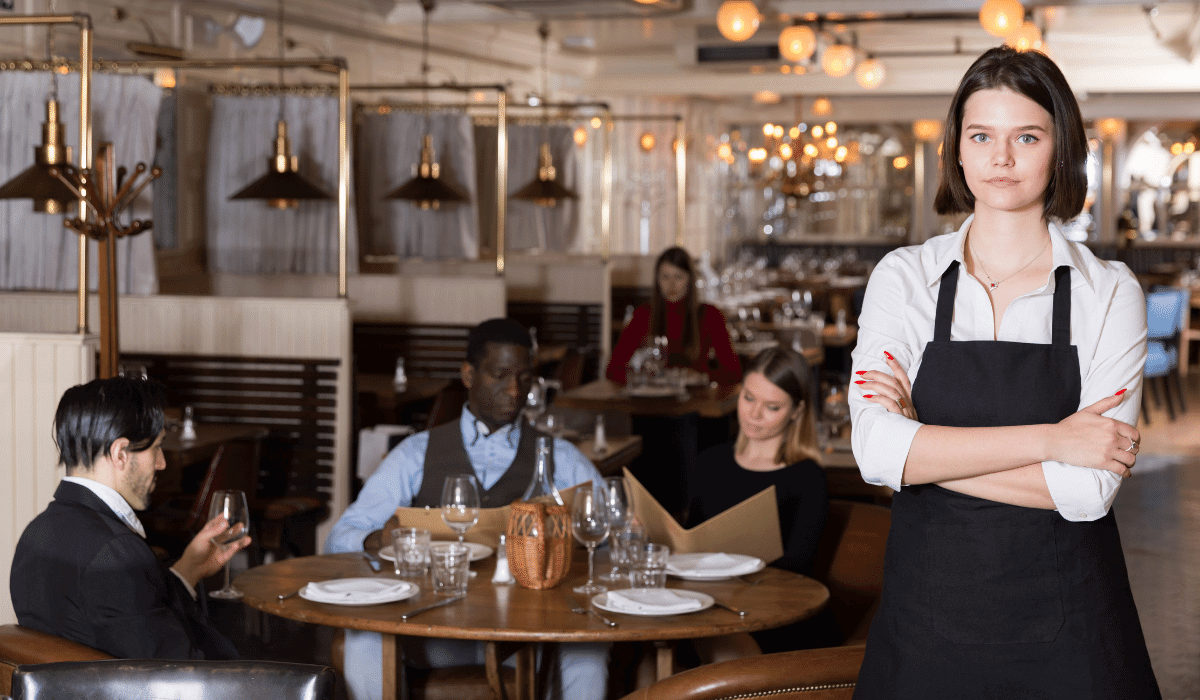For many prospective entrepreneurs, owning a restaurant is a dream come true. Despite the significant risks and long hours, operating a restaurant is one of the most rewarding experiences you will ever have.
Restaurants can suffer from poor investment decisions, failed partnerships, a loss of client base, and poor food quality, all of which can lead to closure. According to a survey conducted by Ohio State University, 60 percent of restaurants fail to survive their first year, and 80 percent fail during the first five years of operation. Experience, leadership, trained personnel, and a menu that keeps enticing consumers are all required when starting a restaurant business.
What Are the Main Reasons Restaurants Fail?
The secret to success in this competitive industry is to prepare ahead of time. Before you begin the planning process, you should look at why restaurants fail in order to avoid abortive scenarios in the first place.
Here are the 9 major reasons why restaurants fail:
1. Lack of Experience in the Industry
The majority of the restaurants are small businesses. If you have no prior experience waiting tables, delivering food, or stocking shelves, you will be at a significant disadvantage when starting a food service business.
2. Poor Choice of Location
A restaurant’s location should ensure foot traffic, which generates revenue. When choosing a location, consider the distance your consumers will have to travel to get to your establishment, the local market, and the time it will take to deliver meals to your clients.
3. Low Initial Investment
It takes a long time for a restaurant to break even. Many business entrepreneurs overlook the costs of the first six to twelve months’ worth of spending. These expenses include rent, taxes, labor, food, equipment repair, and other overhead charges. Before you open your business, be sure to save enough for the initial investment.
4. Lack of Competition Awareness
Opening a restaurant near your competitors, who have been around for a longer time before you, can be disastrous. Your restaurant may fail if you do not analyze what they have to offer. This can result in little or no foot traffic.
5. Poor Staff Management
It is critical to lead a team with confidence and discipline. Having too many or too few employees on duty can hurt the working environment and customer service. If you’re not sure how to manage your employees, hiring a professional can assist you in resolving issues.
6. Ineffective Menu Pricing
What’s left after covering labor costs, overhead expenditures, and the cost of goods sold (COGS), is your profit. Using locally-produced ingredients on the menu and suitably pricing the culinary items on the menu can help keep costs down.
7. High Employee Turnover
The restaurant business has a 70 percent yearly turnover rate, making it difficult for owners to locate stable and long-term personnel. It is sometimes difficult to acquire and keep qualified personnel due to low pay and poor management. Making sure your staff is comfortable by providing adequate compensation and benefits can increase employee retention, and in turn, the quality of service.
8. Weak Customer Service
Positive reviews are based on good service and nice food. Customers use these reviews to decide whether or not to visit a new restaurant. This can be accomplished by cultivating a work environment in which every employee is invested in the restaurant’s success.
9. Bad Partner Relationships
A strained relationship between partners can have an impact on the restaurant’s service and culture. The food and service are frequently reflected in disputes and arguments. This may leave a sour taste in your customers’ mouths, driving them away. This can be modified by avoiding and planning ahead of time for these circumstances.
How Do You Prevent Your Restaurant from Failing?

These issues need not mean the end of your restaurant. A foolproof plan that avoids the above issues and implements an informed and elaborate business plan can protect your restaurant from failure.
Follow these 7 steps to save a failing restaurant:
1. Invest in Quality Restaurant Equipment
It is crucial to understand how to choose equipment for your restaurant that comes with a guarantee, as this means that repairs and cleaning can be done quickly. Keeping up with the latest technologies allows you to stay ahead of the competition. Investing in multitasking, compact equipment allows your team to work in unison, preventing any errors.
2. Use Social Media
Social media is an excellent way to promote your restaurant for free. Because the majority of the young population uses social media on a daily basis, it has a broader reach than print or television media. This can aid in expanding your reach and, as a result, gaining more clients. Using social media to connect with your clients adds a human touch to your business.
3. Be Flexible and Adaptable
It’s critical to be adaptive and flexible in response to shifting trends and cultures. As observed during the pandemic, adapting on the fly has become vital. Restaurants that failed to adapt were forced to close their doors.
4. Increase the Amount of Technology
Using up-to-date technology at your restaurant helps your staff to stay on their toes. This will increase your restaurant’s productivity and customer service. The utilization of QR codes, point-of-sale systems, and the latest culinary equipment helps to improve service without sacrificing taste.
5. Analyze Your Finances
Calculating your profits and losses is a terrific approach to assessing how well your restaurant is performing. When capital, overhead costs, and expenses are all well-managed, you can break even. It’s critical to review your finances weekly to have a clear picture of your expenses and profits.
6. Provide a Delivery Service
After the pandemic, all kinds of restaurants saw the need for delivery services for their customers to stay in business. Everyone appreciates a quick and on-time delivery service. The delivery menu and apps should be simple to use and navigate.
7. Go Through Customer Feedback
Customer feedback is valuable because it reveals areas where services or cuisine can be improved. Negative feedback should not necessarily be viewed as a nuisance; instead, it provides the opportunity to improve. You can also question them directly about their thoughts rather than relying on online input.
Restaurants that are not properly managed can rapidly collapse under the weight of expenses, losses, and a tarnished reputation. Take action now to convert your restaurant into a profitable venture.
Conclusion
First and foremost, it’s important to have a business plan and track your progress. Make sure you are aware of the competition and what they are doing. Stay on top of industry trends. Utilize technology to improve your customer experience. Train your staff adequately and provide them with the tools they need to succeed. Offer good food at a fair price. Be involved in your community. Respond promptly to negative online reviews. These are just some tips to get you started, but there is no one-size-fits-all answer when it comes to running a successful restaurant business.
Have you experienced a restaurant closure? We want to hear from you. Leave your story in the comments below and let us know how we can help.





